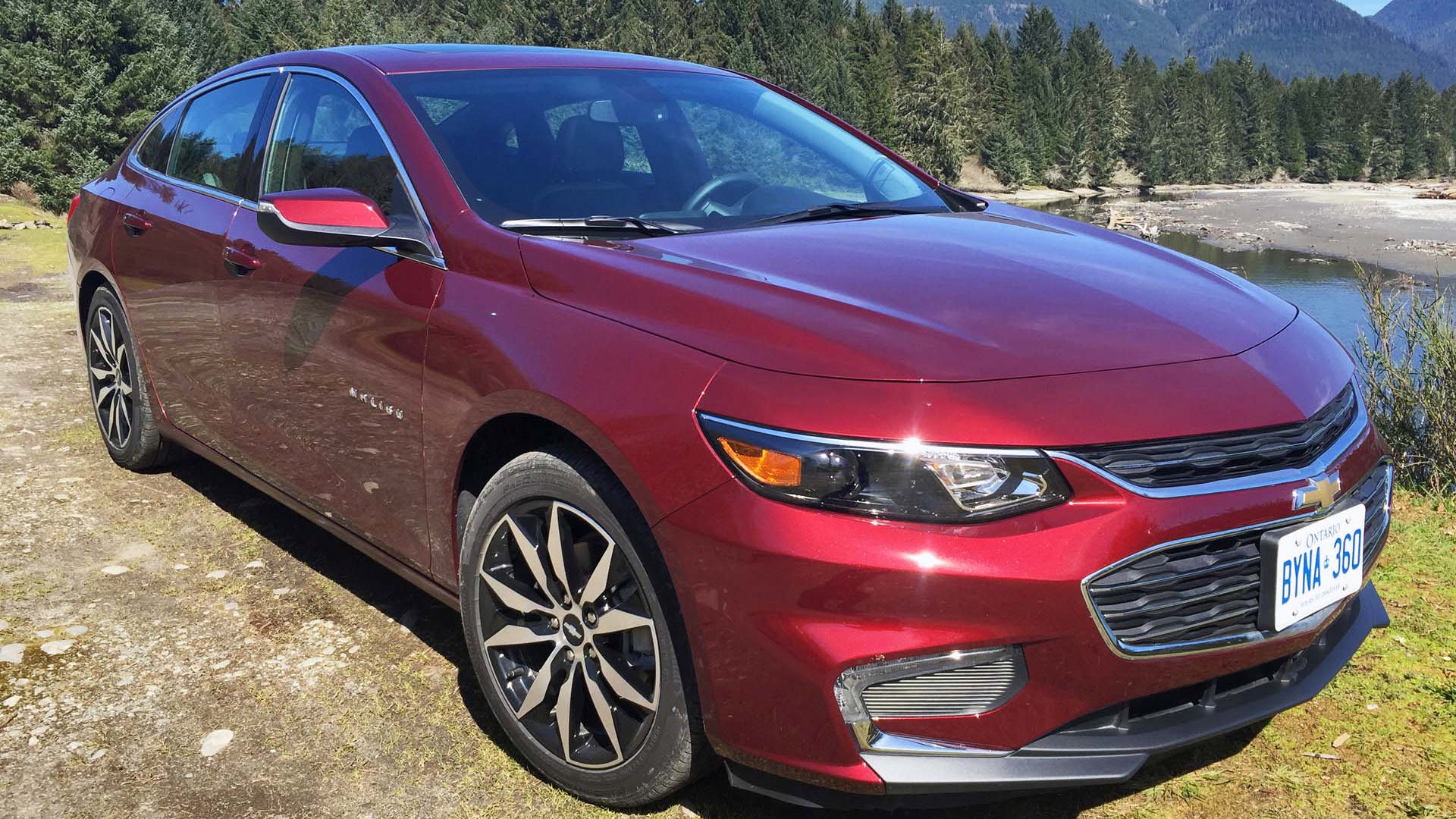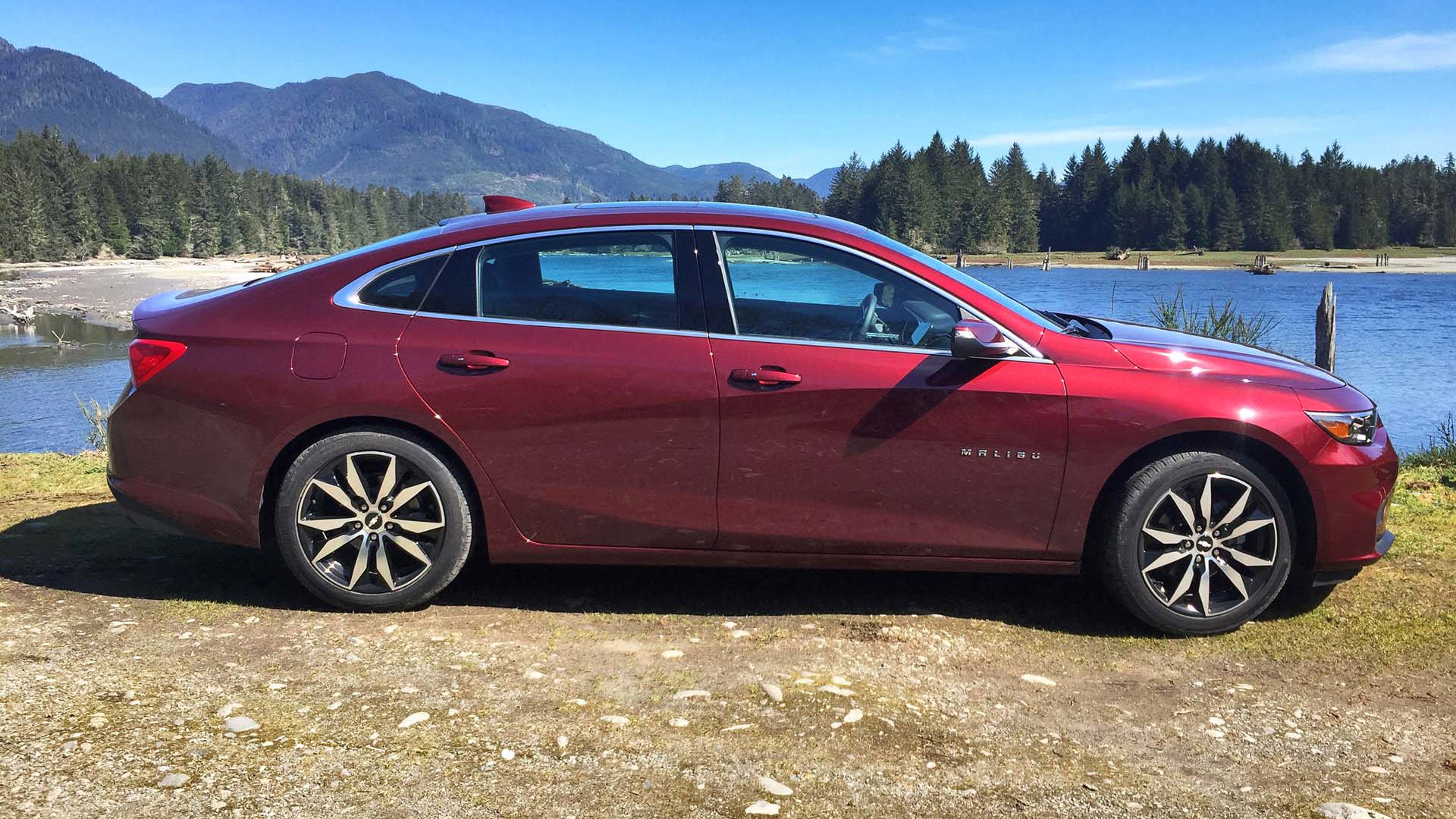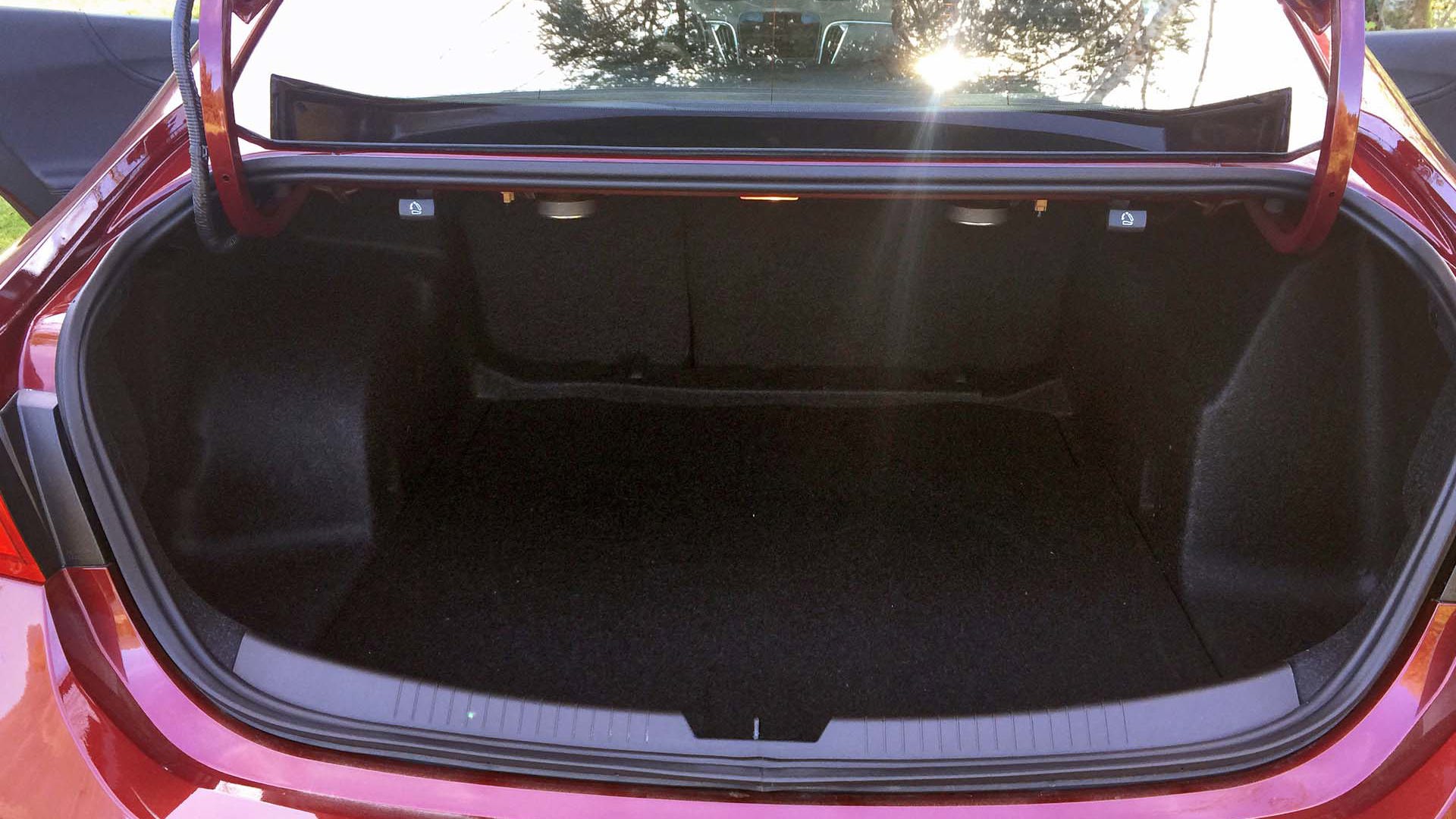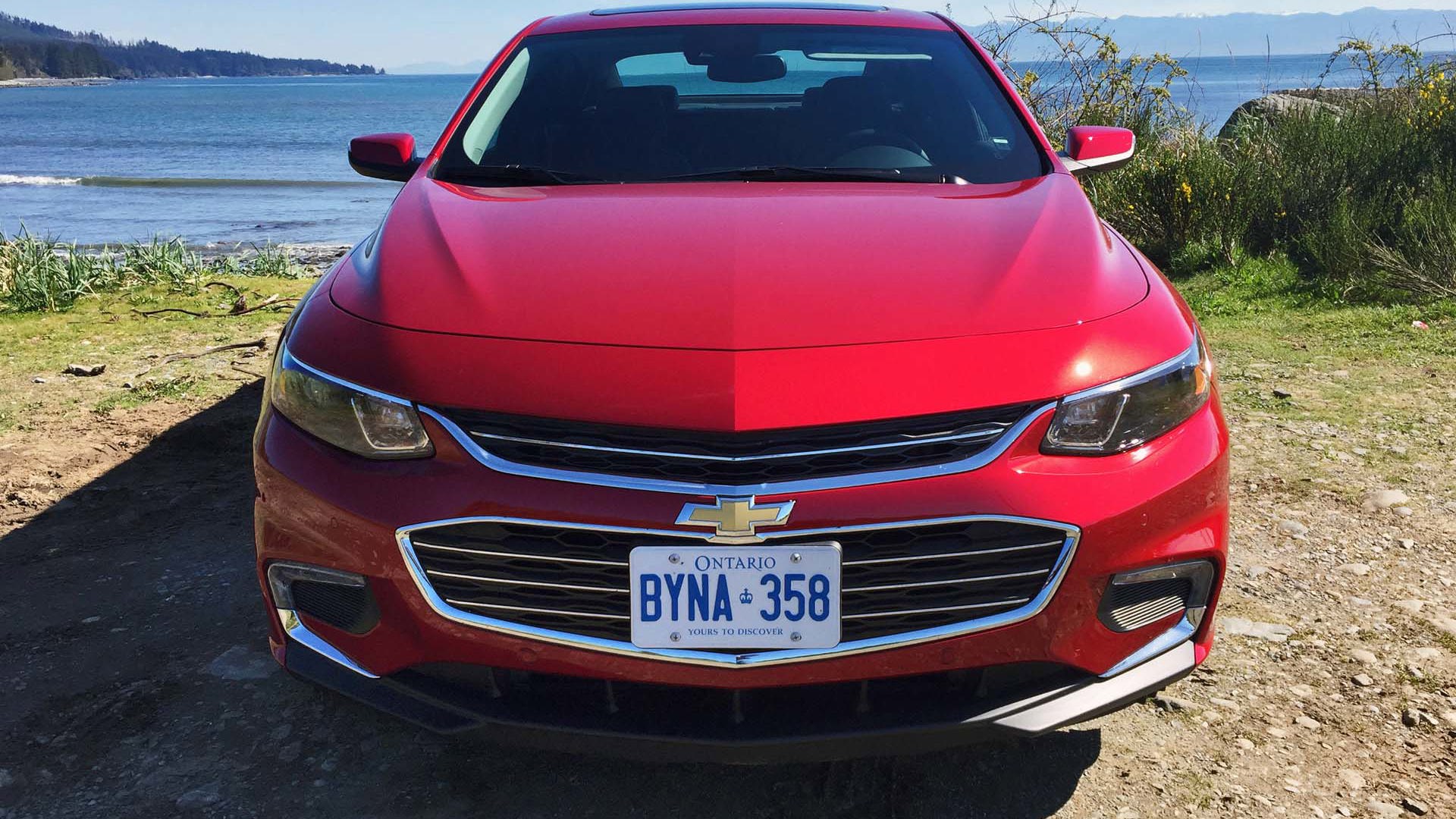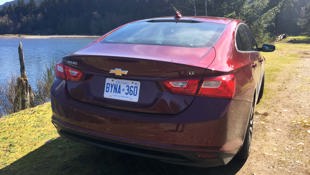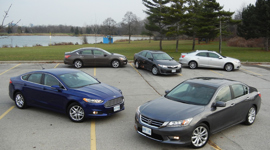Victoria, British Columbia - Prior to getting behind the wheel of the redesigned 2016 Malibu, I was preparing myself for a relaxing but unexciting drive. Not to be too indelicate, but over the past 10 years, the comfy but unremarkable Malibu has become a favourite of rental fleets and retirees.
Agile, quick, quiet, roomy, comfortable and laden with the latest tech toys
So it was with a modicum of shock and a measure of surprise that I experienced a very different Malibu on a recent 300 km drive around the southern half of Vancouver Island: agile, quick, quiet, roomy, comfortable and laden with the latest tech toys – not to mention more affordable than previous Malibus - the new Malibu reminds me a lot of Buick’s European-designed Buick Regal, surely one of the most under-appreciated luxury sedans on the market.
Built on an all-new front-wheel drive platform that makes extensive use of lightweight steel, the 2016 Malibu has gone from being one of the heaviest vehicles in its class to one of the lightest. It’s about 136 kg lighter than the previous Malibu sedan even though its overall length has increased by 58 mm. The base 2016 Malibu L weighs in at just 1,400 kg – over 150 kg lighter than a Ford Fusion 1.5 Ecoboost and about 96 kg lighter than a Honda Accord 2.4 sedan.
The lighter body allowed GM to add a smaller standard engine without degrading performance. 2016 Malibu L, LS and LT trims now come standard with a new turbocharged 163 hp 1.5L 4 cylinder DOHC engine with direct fuel injection which replaces the previous 196 hp 2.5L normally-aspirated four-cylinder engine. Though the new turbo engine has less horsepower, it makes the same amount of torque at lower rpms (184 lb-ft at 2,000-4,000 rpm) which makes it feel more responsive when accelerating at low to mid-range speeds (where you spend most of your time). And in a 0 to 100 km/h sprint, the 2016 Malibu 1.5 turbo is just 0.3 seconds slower than the 2015 Malibu 2.4: 8.5 seconds vs 8.2 seconds.
Despite having less horsepower than its main rivals, the 2016 Malibu with the 1.5 turbo is quicker than most of them from 0 to 100 km/h. The Malibu’s time of 8.5 seconds compares to the 170 hp Ford Fusion 1.5 Ecoboost/6-spd auto with 9.0 seconds, the 185 hp Honda Accord 2.4 CVT with 8.8 seconds and the Mazda6 2.5/six-auto with 7.8 seconds.
As a fuel-saving measure, the Malibu’s 1.5L turbo engine comes standard with an automatic stop/start system that turns off the engine while at traffic lights and automatically restarts when the brake pedal is released. Though I could tell when the engine stopped and started, it wasn’t jerky or noisy enough to prompt me to deactivate it (I can’t say the same for some other cars I’ve driven). The engine drives the front wheels through a standard six-speed automatic transmission which proved to be a smooth-changing partner over the course of my test drive. A manual shift button on top of the gear lever is there for those (rare) times when you want to hold the transmission in a lower gear for acceleration or hill-climbing.
Behind the Tech: 2016 Chevrolet Malibu and High-Strength Steel
Crucially, the 1.5L turbo engine’s fuel economy (L/100 km) is better than last year’s base 2.4L engine: 8.7 city/6.3 hwy/7.6 combined vs 9.3 city/6.4 hwy/8.0 combined (NRCan figures). That makes the Malibu one of the most fuel-efficient mid-size sedans available, just behind the Nissan Altima 2.5/CVT (7.5 L/100 km combined) and equal to the Honda Accord 2.4/CVT. Surprisingly though, the 2016 Malibu’s fuel tank is only 49.2 litres in size, much smaller than average. That gives it a driving range of about 647 km in mixed city/highway driving. One good thing: the 1.5L turbo engine uses regular grade gasoline.
If you’re thinking the Malibu’s new standard 1.5L turbocharged four-cylinder engine may be too small for a mid-size sedan (as I was), you needn’t worry. Such is the power, smoothness and quietness of this little engine that I could hardly believe that there was a small turbocharged engine under the hood. You could opt for the optional 250 hp 2.0L turbocharged engine in top Premier trim, but I wouldn’t have any hesitation in recommending the basic 1.5L unit that’s standard in the L, LS and LT trims.
The top-of-the-line 2016 Malibu Premier model is powered by the same turbocharged 2.0L engine that optionally-available in the 2015 Malibu but with slightly less horsepower and torque: now 250 hp and 258 lb-ft respectively. Still, it zips from 0 to 100 km/h in just 6.4 seconds. The main difference you’ll notice between the new 1.5L engine and the 2.0L engine (apart from fuel economy) is improved low-end throttle response, passing power, and the ability of the engine to stay in a higher gear for longer. As well, Premium grade gasoline is recommended for the 2.0L turbo engine, but not required, according to GM.
2016 Malibu Premier models with the 2.0L engine are mated with a new eight-speed automatic transmission which keeps highway revs down to an observed 1,600 rpm at a steady 100 km/h on a level freeway. That helps achieve reasonable fuel economy ratings (L/100 km) of 10.6 city/7.1 hwy/9.0 combined, an improvement from last year’s Malibu with the 2.0L turbo engine and six-speed automatic transmission which offered 11.4 city/7.9 hwy/9.8 combined. Overall, I found the 2016 2.0L powertrain to be a smooth, quiet combination that provides immediate throttle response, good passing power and seamless shifts. Personally, I’m glad GM chose to stick with a conventional automatic transmission rather than a continuously variable unit (CVT).
At speed the Malibu’s cabin is very quiet. The 1.5L turbo engine is a bit quieter than the 2.0L turbo but both were surprisingly subdued. I couldn’t hear the characteristic whistle of the turbocharger that usually occurs under acceleration. As well, wind and tire noise are also restrained. The Malibu’s cabin is well-insulated.
Perhaps the biggest surprise was the 2016 Malibu’s ride and handling. Being lighter, it feels more agile. Over the twisty, undulating coastal roads of Vancouver Island’s southern tip, the Malibu provided a firm but compliant ride and steady, level handling, controlled rebound, and no creaks or groans from the fully independent suspension. The improved ride is due in large part to the 2016 Malibu’s longer wheelbase - GM stretched it by a substantial 101 mm.
Steering response is good but steering feel is somewhat vague and a bit overboosted. The Malibu’s electrically-assisted rack and pinion steering system is not speed-sensitive, so steering firmness doesn’t increase with speed. As well, its turning diameter of 11.5 metres is a bit too wide for quick u-turns.
Optional on LT and Premier models is a package of collision-avoidance technologies that use radar and cameras to warn the driver of potential collisions, and in some cases, automatically brake or steer the car to avoid collisions. The Driver Confidence I package ($1,350) includes Low Speed Front Automatic Braking and Front Pedestrian Braking, Forward Collision Alert, Rear Cross-Traffic Alert, Lane Change Alert with Lane Departure Warning and Lane-Keeping Assist, and Front and Rear Park Assist. The Driver Confidence II package ($1,350, Premier only) adds Adaptive Cruise Control, Front Automatic Braking at high speed, Automatic Parking Assist, and Electric Parking Brake.
Of these, the front and rear parking alerts (along with the rearview camera) and the rear cross-traffic warnings are the most useful in everyday driving. When a driver’s visibility is restricted, these technologies are invaluable in preventing minor collisions.
Unfortunately, we didn’t get a chance to drive the new Malibu Hybrid which borrows much of its technology from the Chevrolet Volt and claims a fuel consumption rating of just 5.0 L/100 km in combined city/highway use. We’ll leave that for another test drive.
The 2016 Malibu’s interior has been completely redesigned with a wider, brighter instrument cluster with a larger information display screen between the tachometer and speedometer, a new steering wheel with redesigned control surfaces, a redesigned centre console that tapers inwards towards the bottom to allow more kneeroom, a larger seven-inch tablet-like touchscreen that protrudes from the dash, the elimination of many hard button audio controls in favour of touchscreen controls, and a new storage area at the bottom of the centre console where phones can be charged or connected to the infotainment system.
The 2016 Malibu’s longer wheelbase contributes to a roomier cabin, particularly for rear seat passengers. Though the wheelbase is 101 mm longer, GM says there is just 33 mm more rear legroom. Sitting “behind myself” I had plenty of kneeroom and headroom, and despite the flowing fastback roofline, I didn’t find it difficult to duck under the roof pillar to get in and out of the car. The front seats are large and very comfortable. Our Malibu LT’s driver’s seat had power height, recline and lumbar adjustments and the driving position allows easy access to controls on the centre console and steering wheel - with the exception of the USB and 12-volt charging ports which are located deep under the bottom of the centre console.
Aside from wireless Bluetooth telephone and audio connectivity, iPhones and Android phones can now be connected to Apple CarPlay or Android Auto using a USB cable plugged in at the bottom of the centre console. The phone’s home menu appears on the touchscreen and users have access to their phone’s apps including text messages, e-mail, music and maps. As far as I know, the 2016 Malibu (Premier) is the only car to offer wireless phone charging with air conditioned phone cooling. As well, rear passengers have two USB, a 12-volt and a 110-volt outlet for their devices. For surfing the web, GM’s in-car 4G LTE wi-fi system can connect up to seven wireless devices to the internet while driving.
Then there’s OnStar. It provides many services: emergency assistance with automatic crash response and available roadside assistance if you break down and navigation assistance including operator assistance and turn-by-turn navigation instructions. You can download an OnStar app that allows you to start the car or lock the car remotely using your phone. OnStar can also send you diagnostic reports and dealer maintenance notifications. If your car is broken in to and the alarm is activated, OnStar can notify you by text. And if your car is stolen, OnStar can automatically bring your stolen car to a stop, wherever it is!
Another feature called Teen Driver helps parents keep tabs on their teenage drivers. Parents can program their Malibu with a Speed Warning and a Speed Limiter, Audio Volume Limit, Radio Mute when Seatbelt Unfastened, and receive an In-Vehicle Report Card that profiles their teenager’s driving history, including distance driven, maximum speed driven, and forward collision warnings. I wonder what George Orwell would think of this?
The 2016 Malibu’s trunk space of 447 L is down slightly from the 462 L trunk of the 2015 Malibu, but it’s still a roomy, fully-lined cavity with 60/40 split folding seatbacks that are released from inside the trunk.
2016 Malibu MSRPs have dropped significantly from 2015, depending on the trim level. The (new) base 2016 Malibu L sedan starts at $21,745, LS at $24,245 (down from $25,140), LT $25,242 (down from $26,990), Premier $32,045 (down from LTZ $33,250). The new Hybrid is $28,850.
The 2016 Malibu has been selling well: in the first three months of 2016, it rocketed to second place among mid-size cars in Canada, behind the Toyota Camry. Considering the competition, that’s pretty impressive.
The 2016 Chevrolet Malibu is built in Fairfax, Kansas.
